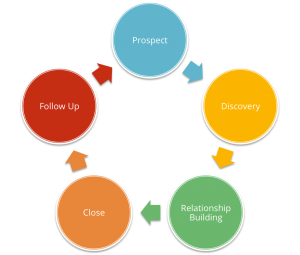
When you’re overcoming objections that means you are in a sales cycle with a buyer, and you might have noticed that it doesn’t always go as planned. Have you noticed that a buyer will also withhold objections or indirectly hint at their reservations in an attempt to avoid the conversation? And have you tried to proceed with tie-downs as if you’re still in the “closing” phase, only to be pushed out the door? In this 3-part series on “Overcoming Objections: From No to Yes,” we are reviewing the view of the top sales objections and why they happen.
Buyer v. Seller – different perspectives on overcoming objections
To overcome a buyer’s objections, you must understand their roots. To understand the buyer’s objections is to consider what is behind it. First, when a buyer gives an objection, he or she will give a clue as to where they’re truly at in the buying cycle.
As soon as you’re faced with an objection, it’s common to want to immediately reply with an answer to “overcome the objection.” It’s tempting to want to win at all costs. Have an answer for anything. Keep in mind, too, that the savvy buyer may be more aware of this than you realize, crafting his response in anticipation of what yours is going to be… and you’re likely doing the same thing.
5 phases of the buying cycle
There are numerous methodologies for sales cycles- some more complicated than others.
For the purpose of simplifying the sales cycle, here’s one that we commonly follow when working to overcome objections.
1. PROSPECT
During this stage, list all potential customers or parties that would be interested in the product or service. Identification, prescreening, and presales call planning are done by answering the following three questions.
- What professional duties, jobs, or roles do our potential clients or referral sources perform?
- What specific service or product do you want this client or referral source to refer to us?
- Does this potential client or referral source match our criteria for a target?
2. DISCOVERY
This is a period of introduction and learning and is more frequently cut short than you might realize. You are not selling in this phase, you are learning. That means you want to resist the temptation to talk too much during this time. Ask questions that help you learn more about the client or the referral source. Verify that your pre-sales meeting during prospecting was accurate. This step may consist of one call, an in-person meeting, or a combination of both. So, seek first to understand your referral source. That way you can determine what to present after you assess their needs and desires. In addition to learning about their needs, you want to understand the following before proceeding to the next phase:
- Who is the true decision maker or referral source at this site?
- How does this referral source choose their business partners? (Programs, ease of use, quality outcomes, like the staff, influenced by others in the company)
- What unique selling point do we have that will attract this referral source?
3. RELATIONSHIP BUILDING
This stage is more frequently skipped than you realize. During relationship building, you are now presenting your unique selling point. Remain focused on the one aspect of the company that meets the needs of the client or referral source.
4. CLOSE
This stage is the shortest in duration. You move from “Relationship Building” to “Close” when you have received your signed contract.
5. FOLLOW UP
The best place to get more business is from the client or referral sources that are currently giving you business. If our work is good, the client or referral source should be willing to refer more business and refer us to their associates. This is also the stage in which we request a testimonial for promotion purposes.
What’s next?
Throughout this 3-part series, we’ll continue to dig deeper into overcoming objections and discover how you can turn a “no” into a “yes” in the sales cycle. Understanding the sales cycle from the buyer and seller’s perspective is critical to your long-term success in building lasting, profitable relationships.
Join in the conversation.
How have you worked to understand the phases in your sales cycle? How is it helping with overcoming objectives? We’d love to hear from you. And when you’re ready to take your client relationships to the next level, contact us at C2 Consulting for a free consultation.



